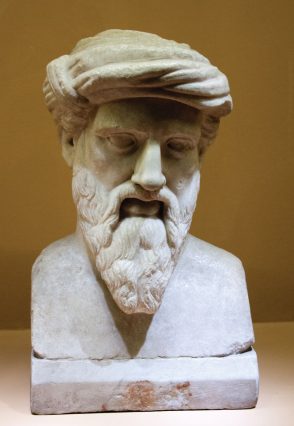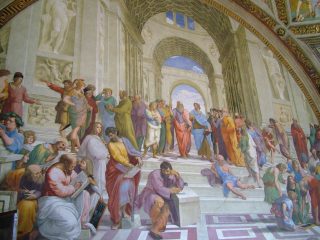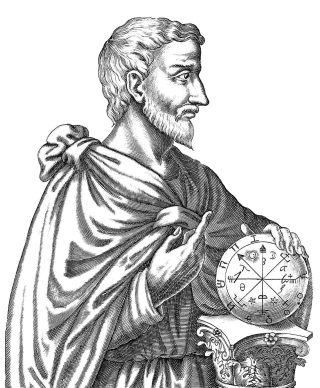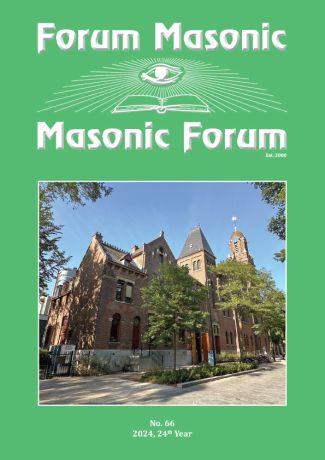
Musica universalis, also known as the music of the spheres or the music of the planets, is a philosophical concept that looks at proportions in the movements of celestial bodies – the Sun, the Moon and the planets – as a form of music. The theory originated in Ancient Greece and was a principle of Pythagoreanism and it was later developed by the 16th century astronomer Johannes Kepler. A whole is aesthetically beautiful if all its components are in harmony. The concept of “music of the spheres” incorporates the metaphysical principle that the mathematical relations express qualities or “tones” of energy that manifest as numbers, visual angles, shapes and sounds, all connected through a model of proportion. Pythagoras was the first to identify the fact that the height of a musical note is inversely proportional to the length of the chord that produces it and that the intervals between harmonious sound frequencies form simple numerical ratios. Pythagoras held that the Sun, Moon and planets all emit their own unique sound based on their orbital revolution, and that the quality of human life reflects the effect of the celestial sounds which are physically imperceptible to the human ear. From this argument and from the observation that their speeds, measured through distances, give the same ratios as their musical equivalents, Aristotle claimed that the sound emitted by the circular motion of the stars is a harmony. Plato described astronomy and music as “sister” fields of sensory recognition: astronomy for the eyes, music for the ears, but both of them requiring the knowledge of numeric proportions. Boethius, in his influent work, De Musica, described three categories of music:
- musica mundana (called musica universalis)
- musica humana (the music of the human body)
- music created by singers and instrument players
Boethius thought that musica mundana can be discovered through the intellect and that the order within it is the same as the one in the music we can hear, both of them reflecting the beauty of God.

Pythagoras claimed that numbers are the language of nature by discovering a fundamental relation between music and mathematics. There is relation in nature, a unity in its diversity, and harmony is a state precursor to beauty. From a musical standpoint, this relation can be summarized thus: a strung chord, vibrating as a whole, produces a sound. Its harmonics are produced by dividing the chord in an exact number of parts. Pythagoras’ system is built upon overlapping perfect fifths, representing the natural succession of the sounds. Starting from C and going up there are 12 fifths that can be formed, and going down – another 12 natural fifths. By arranging this sonorous material in ascending order, in an octave, we get the untempered Pythagorean scale, made up of sounds resulted from the chain of natural fifths. The untempered Pythagorean system has only one type of comma, called the “Pythagorean comma”. The diatonic semitone, called the lymma, is smaller than the chromatic semitone, called an apotom, i.e. a Pythagorean comma. Note that the lymma is the smallest diatonic semitone, while the apotom is the largest chromatic semitone out of all intonation systems.

The fact that the intervals are those found in the harmonics of the fundamental sound makes the Pythagorean untempered system suitable for expressively manifesting the melody. It is also used when tuning string instruments. Pythagoras discovered that the harmonics that are pleasant to the ear correspond to the exact division of the chord through integer numbers. For Pythagoreans, this discovery has a major mystical force. For them, the movements of the stars and the planets were what they called “the music of the spheres”. The movement of the skies is nothing but an ample symphony, a music on several voices, everything in a continuous vibration, starting from the microcosm all the way to the macrocosm. The music of elementary particles was estimated by Joel Sternheimer at about 60-70 octaves higher than what we can hear (ultrasounds). At the opposite end, the sounds emitted by a black hole in the Perseus constellation have frequencies several million times lower than the human ear can perceive and are currently the lowest notes discovered in the Universe (infrasound).
In the material Universe, everything vibrates. Stars send electromagnetic waves that are variable in time and space. Sounds have the same wave-like properties as light. One of the characteristics of sound is the vibration that appears at the same time as it is produced. Vibration happens automatically, sometimes unwillingly from our part. The applications of resonance / vibration are limitless and possible in any field, and sounds create, support or destroy continuously. Pythagoras said that there is a divine harmony and mathematical order in all that is manifest, anywhere we look.
Here are some examples. If we blow through a whistle and put a hand on its end we will perceive the column air passing through it. Depending on the note, the air column passing through the recorder will form certain waves. Similarly there are also waves (vibrations) that can’t be seen, but can be scientifically proven, such as electromagnetic waves. They have sizes that propagate with the intensities of an electric field or of a magnetic field, such as radio waves.
Vibrations have certain shapes, because in their path there are various elements of nature. By meeting these objects, they shape themselves according to the qualities and properties of these “obstacles” (air, water, gas, solids etc.). These qualities are the proof that vibrations also have a shape. The ancient Greeks knew seven planets, exactly the same number as the diatonic notes of a musical scale. We owe the concept of “music of the spheres” to Pythagoras, who said that in their movement planets produce harmonics. In the 5th century BC, Pythagoras viewed the space between Earth and the stars placed on a sphere around the Earth as a perfect harmonic interval.
For Pythagoras, the number 4 is “the root and foundation of all things”. He said that the number 10 is born from 4, because 1 + 2 + 3 + 4 = 10. The decad (the number 10) is, therefore, a complete ensemble, a closed cycle to which there is nothing to be added, and the sacred Tetrad (1, 2, 3, 4) has analogies with geometry. As such: 1 corresponds to the point, unity; 2 – to the line; 3 – to surfaces; 4 – to bodies, with the benchmark being the cube. The number 4 therefore expresses the finished work through which art, creation and the creator are revealed.
Johannes Kepler was certain that planetary orbits are arranged in a progression (sequence) where each orbital plan represents the chord of an instrument, like in the Titius-Bode law. Kepler decoded the movement of planets in three laws bearing his name, the last one published in the book Harmonies of the World. He begins from the principle of the low sound which corresponds to Saturn, the slow planet, to which he attributes the starting note, G.
From Antiquity to nowadays, music and astronomy have complemented each other in understanding the Universe. Modern science has discovered radio astronomy, turning to reality the old myth of the music of the spheres, which was said to exist, but not able to be perceived. With advances in technology, mankind has brought to perceivable reality that which seemed to only be conceived in thought. Today we can listen to the sounds of stars, pulsars, quasars, but also of planets that have a magnetosphere. The Earth is a planet that has a magnetosphere and emits sounds in space, detectable through special research and observation/listening techniques. The geomagnetic activity is strongly linked to solar activity, which geomagnetic storms starting when a powerful eruption touched the Earth. With the launching of two Radiation Belt Storm Probe satellites on August 30th, 2012, one of them managed to record an acoustic phenomenon known as “the Earth’s choir”. Craig Kletzing, who leads the team of researchers, explained that the sounds are emitted by energetically charged particles in the upper layers of the Earth’s magnetosphere, before they get caught up in the motion generated by the circular radiation fields around the planet.
In the 18th century, the philosopher Gottfried Wilhelm von Leibniz (1646-1716) said: “music is secret mathematical exercise, and whoever deals with it does not realize that he is dealing with numbers”. Around the same time, Johann Sebastian Bach (1685-1750) encoded his name and some of his compositions through musical codes. Bach could write his name with notes – B A C H: B flat, A, C, B natural. In German musical nomenclature, in which the note B natural is named H and the B flat named B. Another encryption used by Bach was based on the science of numbers, the Gematria (which is different from geometry). By attributing a number to each letter of the alphabet, A=1, B=2, C=3 and so on you get BACH = 14, and his full name, Johann Sebastian Bach = 41. Pyotr Ilyich Tchaikovsky, in his “Suite for Orchestra”, Op. 53, encrypts the name of his wife, his daughter and his brother, Anatoly through the sounds of the first movement. The system used by Tchaikovsky is similar to one used later by Maurice Ravel and Claude Debussy. By naming one of his works The Enigma Variations, composer Edward Elgar sets a new challenge that has generated much speculation, but never received a conclusive answer. It is thought that “Enigma” involves a hidden melody in which every variation is a musical cryptogram. Here we have the names of close acquaintances, among which Elgar’s wife, Alice, his friend and editor Augustus J. Jaeger and Elgar himself.
In the evolution of the music of the spheres, the name of Franco de Cologne comes to mind through his work, Ars cantus mensurabilis (The Measurable art of Singing). In it he tried to encrypt the tonality and duration of sounds, with notes being either long (full) or short (a third of a full note).
The Benedictine monk Guido d’Arezzo (b. 991/992 – d. after 1033) would give names to the notes that musicians use to express themselves today. The system he invented used the sounds “Ut, Re, Mi, Fa, Sol, La, Si” to represent an octave. The names of the seven notes ended with a vowel, which allowed them to be sung easily. Later, the “Ut” sound would be replaced in the 16th century with “Do” (C) from the Latin word “Dominus” (God). The interpretation of the current musical notation system is the following:
Do – Dominus – God
Re – rerum – matter
Mi – miraculum – miracle
Fa – familias planetarium – the family of the planets, of the solar system
Sol – solis – sun
La – lactea via – the Milky Way
Si – sidarae – the stars
The Romanian composer Corneliu Cezar (1937-1997), in his “Treatise on Sonology – Towards a Hermeneutics of Music”, makes an analogy between the geocentric longitudes that the Sun crosses in a year and musical notes:
0 30 60 90 120 150 180 210 240 270 300 330
Do Do# Re Mib Mi Fa Fa# Sol Lab La Sib Si
The idea that the universe is governed by numbers has fascinated all the great mathematicians, physicists and philosophers of the world. Probably no other number illustrates this idea better and has not been surrounded by more fame and mystery than the number phi – φ –, also known as “the golden number”, “the golden section”, “the golden ratio” or “the golden proportion”. The symbol φ represents the first letter in the name of the Greek sculptor Phidias, considered to be the first artist ever to use “the golden ratio” in his works, among which the statue of Zeus from the Temple of Olympia and the Parthenon in Athens. Defined by Euclid over two thousand years ago, the irrational number phi = 1.1618(033) seems to be involved everywhere in nature: from crystals, pine cones, snail shells and the way petals are arranged on flowers to the shapes of galaxies. The presence of “the golden ratio” has been demonstrated in the construction of the pyramids, in Leonardo da Vinci’s paintings and in the sculptures of Constantin Brâncuși. Paul Larson, a professor at Temple University, has discovered “the golden ratio” in the oldest canticle – Kyrie Eleison – of the Gregorian mass, which has been sung for over 600 years. Since musical works are divided into equal time units, called measures, mathematician John Putz has analyzed the ratios between the numbers of measures in the three sections of Mozart’s piano sonatas. This research has led, in the vast majority of cases, to the golden ratio. Roy Howat, a professor at Cambridge University argues in his book, Debussy in Proportion, that through the harmonic and modal innovations in the hexatonic scale consisting of only tones (mode 1 with limited transposition in composer Olivier Messiaen’s system) Debussy has influenced many composers.
Howat gives as an example the work for piano solo, “Reflections in the water”, where Debussy uses numeric relations and ratios specific to the Fibonacci sequence in the melody, the harmony and the rhythm (i.e. 1, 2, 3, 5, 8, 13, 21, 33, 54 etc.). Composer Alban Berg constructed his chamber concert on a structure of three measures, with three distinct themes, brought to the voices of the three families of instruments that are used (piano, strings and wind instruments). In 1907, Zoltan Kodály writes Méditation on a theme by Claude Debussy. Just like the fugue from Bela Bartók’s Music for Strings, Percussion & Celesta, the work opens in piano and ends in pianissimo, with a central climax marked fortissimo. If we count the measures of this work we find out there are 508. The golden ratio for 508 is 314 (the closest integer number), and this happens exactly in the middle of the two climax measures (fff). This is also known as an “arc” (ABA). The golden ratio can be found in works by Romanian composers as well. Some of Dumitru Capoianu’s compositions area created based on some computer programs. Composer Wilhelm Georg Berger creates several types of modes (musical scales) called species that differ based on the value of the unit of measurement. Critic Eduard Hanslick (1825-1904) has expressed the relation between music and mathematics in his book On the Musically Beautiful: A Contribution Towards the Revision of the Aesthetics of Music as: “The music of nature and the music of man are set in two distinct categories. In order to translate the first into the second one must pass through the science of mathematics.” The idea to take away from this is that the golden ratio and the sacred geometry behind these works offers them their symmetry, proportion and aesthetically pleasing beauty.
In his book, The Golden Ratio: The Story of Phi, the World’s Most Astonishing Number, Mario Livio says that the number 3 has been considered “the first truly masculine number”, but also “the number of harmony”, since it combines the unit (1) and division (2). For the Pythagoreans, the number 3 is odd because it has a beginning, a middle and an end, as opposed to 2, which has no middle. The geometric expression of 3 is the triangle, because three points that do not all lie on the same straight line determine a triangle, and its surface contains two dimensions.
The works of Matila Ghyka, starting with Esthétique des proportions dans la nature et dans les arts, compile and build a theory of the golden ratio by showing that in the case of both plants and animals there is a preference for the pentagon shape linked to the golden ratio. Man inserted in a pentagram is precisely Leonardo da Vinci’s Vitruvian Man, which shows that the measurements of the human body express the proportions assimilated in the golden ratio. The pentagram is also a symbol of health and knowledge in the Pythagorean school, while also being a way the adepts could recognize each other. The pentagram can also be interpreted as King Solomon’s seal, a view originating in the legend that the wise king could impose his will on demons through a seal ring engraved with the Tetragrammaton (YHVH).
















